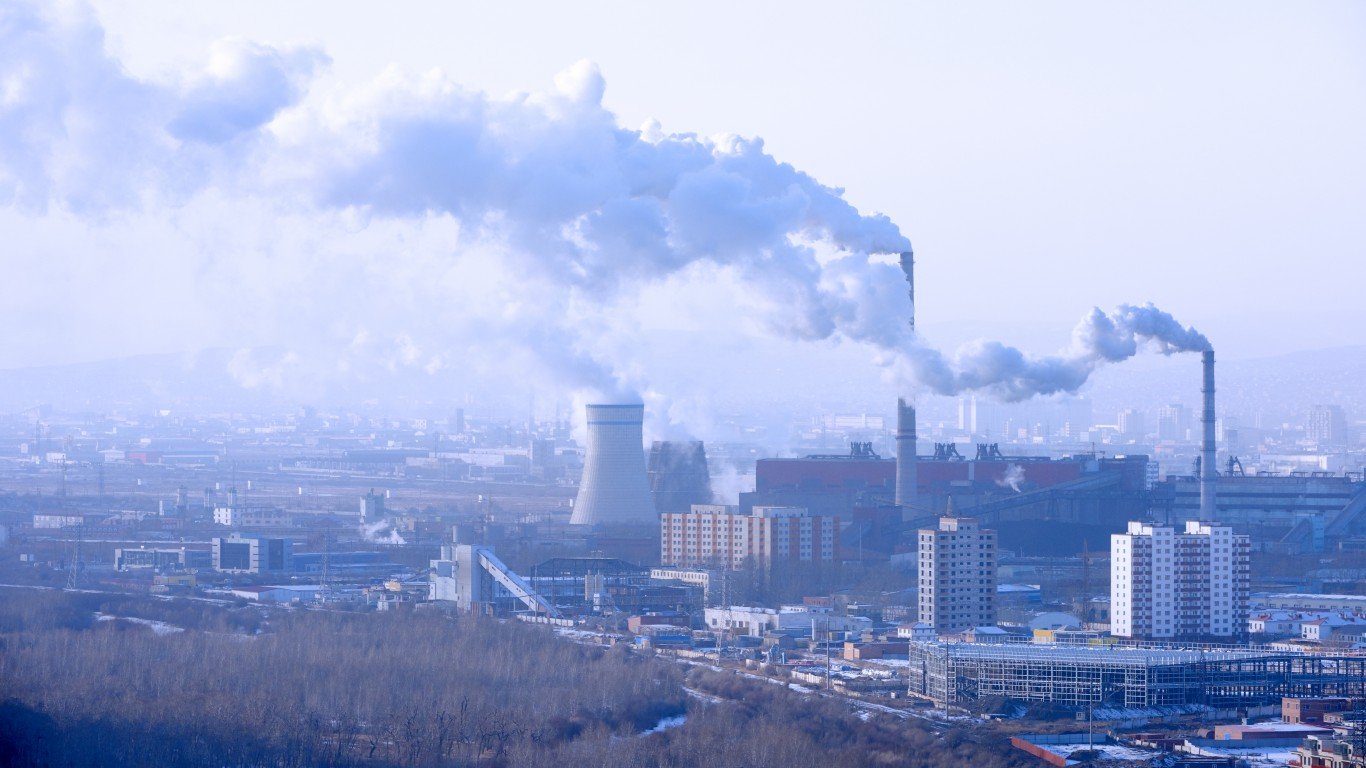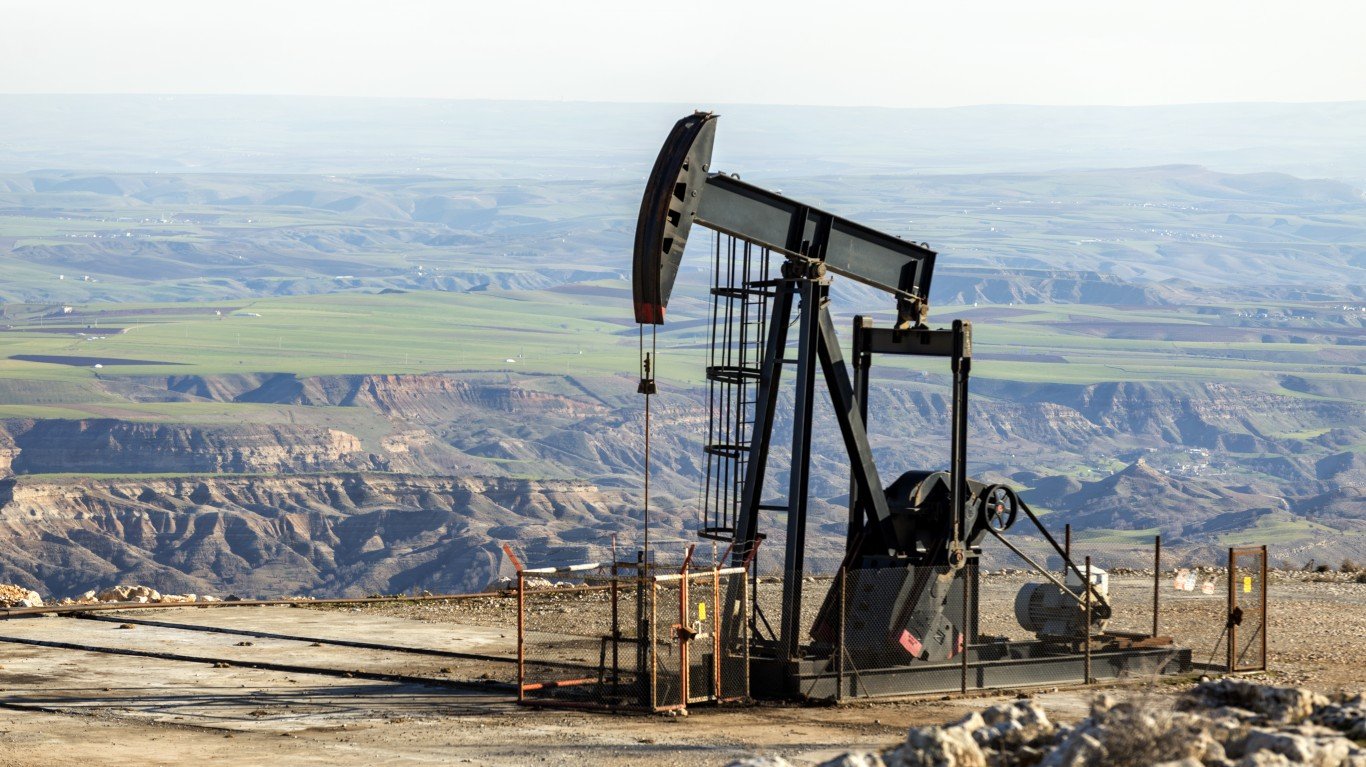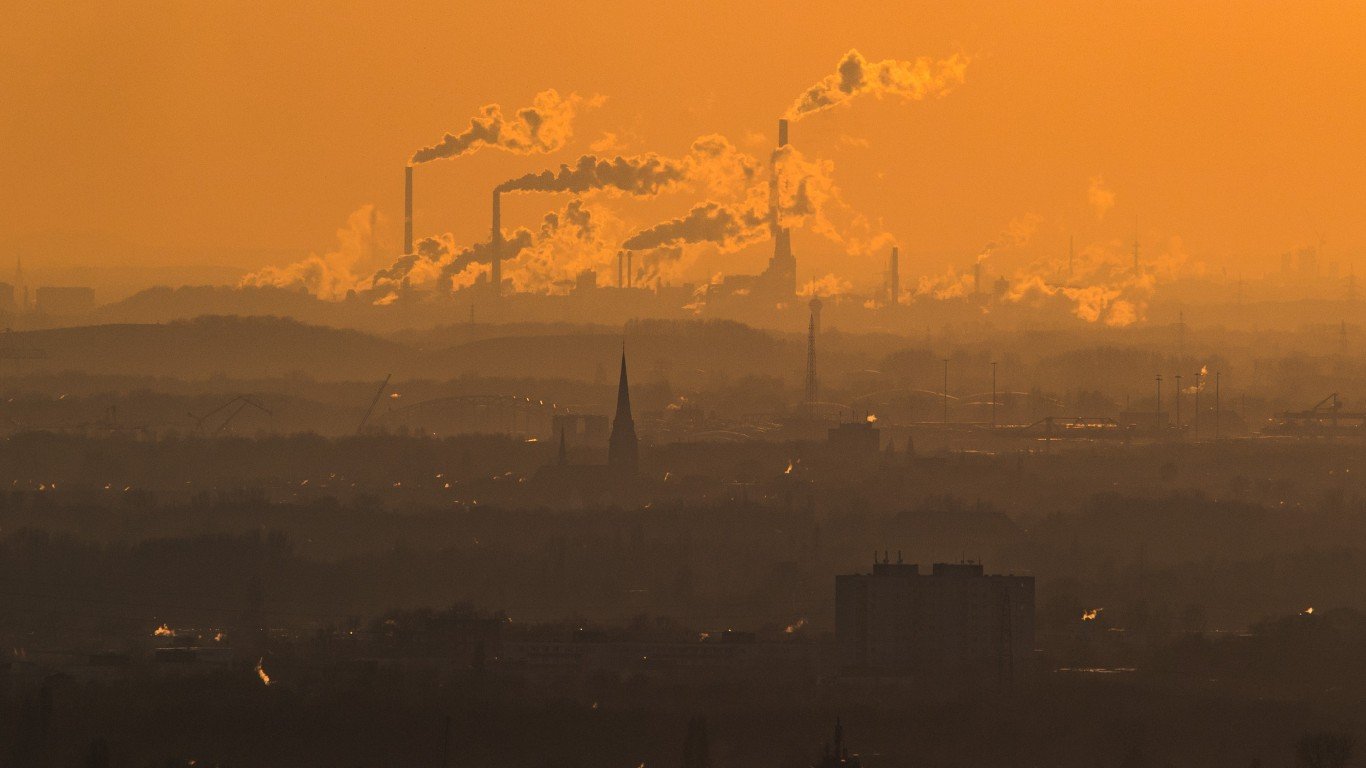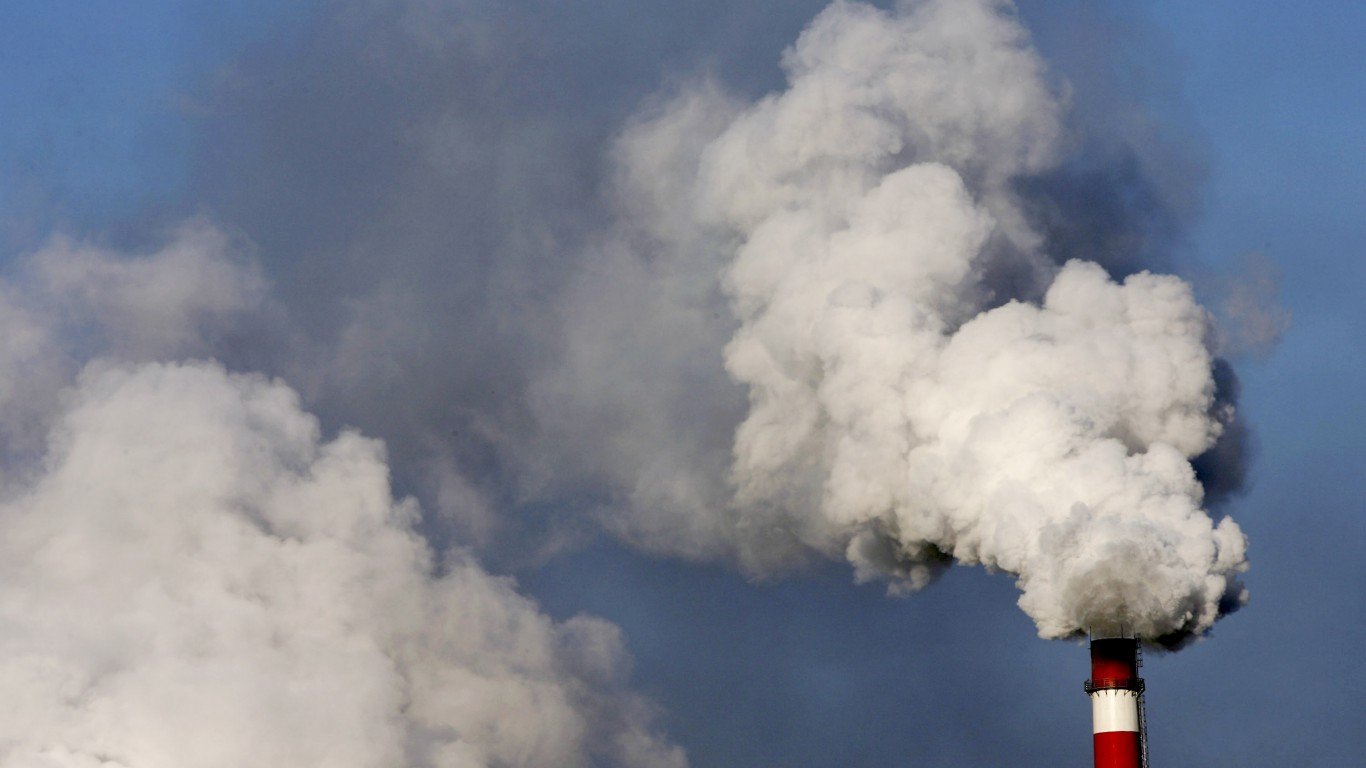
30. Mongolia
> CO2 emissions, metric tons per capita, 2019: 7.03
> CO2 emissions, metric tons per capita, 2010: 5.20 — #58 highest of 147 countries
> CO2 emissions per GDP, 2019: 0.58 — #5 highest of 148 countries
> Total GHG emissions, million metric tons, 2019: No data
This landlocked Asian nation between China and Russia is among the most polluted in the world. It had the fifth-highest total of CO2 emissions per GDP in 2019. Coal is the main source of energy for the nation of 3.3 million, but it is beginning to add renewables such as hydro, solar, and wind to its mix of energy sources.

28. Iran
> CO2 emissions, metric tons per capita, 2019: 7.04
> CO2 emissions, metric tons per capita, 2010: 6.76 — #41 highest of 147 countries
> CO2 emissions per GDP, 2019: 0.52 — #7 highest of 148 countries
> Total GHG emissions, million metric tons, 2019: 778.10 — #6 highest of 87 countries
The Islamic Republic of Iran had the sixth-highest total in greenhouse-gas emissions and was seventh in CO2 emissions per GDP in 2019. The nation of 84 million people has legislation requiring the country to boost its share of renewables to 5% by the end of 2021.

28. Germany
> CO2 emissions, metric tons per capita, 2020: 7.04
> CO2 emissions, metric tons per capita, 2010: 9.45 — #25 highest of 147 countries
> CO2 emissions per GDP, 2020: 0.15 — #60 lowest of 148 countries
> Total GHG emissions, million metric tons, 2020: 598.89 — #8 highest of 87 countries
Germany was eighth in the world in total greenhouse-gas emissions in 2019. Coal and nuclear energy sources are being phased out. Germany, a nation of 83.2 million people, plans to have half of its energy needs supplied by renewables by 2030. It also is boosting wind power and investing heavily in hydrogen.

27. China
> CO2 emissions, metric tons per capita, 2019: 7.07
> CO2 emissions, metric tons per capita, 2010: 5.85 — #51 highest of 147 countries
> CO2 emissions per GDP, 2019: 0.43 — #17 highest of 148 countries
> Total GHG emissions, million metric tons, 2019: 10618.71 — #1 highest of 87 countries
China’s energy needs are soaring, and the world’s most populous nation â 1.4 billion people â is utilizing a variety of energy sources. The International Energy Agency said China will account for 40% of the world’s renewable energy increase from 2019 to 2024. Over that period, China is predicted to account for half of the world’s solar-panel growth. Fossil fuels are still an important part of its economy, though, and China led the world in total greenhouse-gas emissions in 2019.
26. Belgium
> CO2 emissions, metric tons per capita, 2020: 7.22
> CO2 emissions, metric tons per capita, 2010: 9.56 — #24 highest of 147 countries
> CO2 emissions per GDP, 2020: 0.16 — #68 lowest of 148 countries
> Total GHG emissions, million metric tons, 2019: No data
While Belgium still relies on fossil fuels, receiving its gas imports from The Netherlands, it is aggressively moving away from them. The nation of 11.5 million phased out coal-generated power in 2016 and the Western European country is considered a world leader in wind power.







